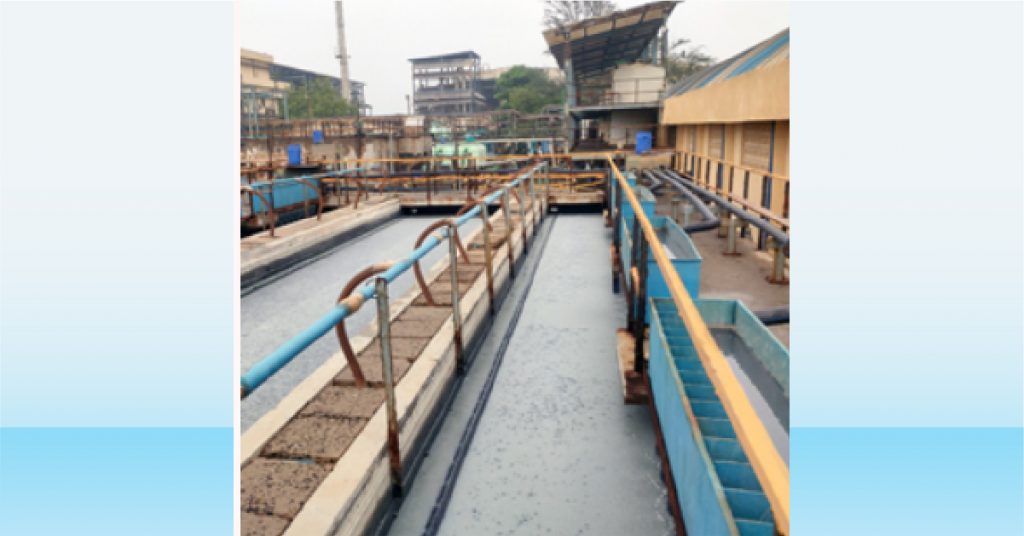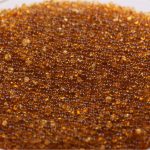Wastewater management is one of the most pressing environmental concerns of our time. With industries, municipalities, and communities generating millions of liters of wastewater daily, the challenge lies in treating it effectively while minimizing costs and environmental impact. Among the many technologies available, anaerobic wastewater treatment has emerged as a sustainable, eco-friendly, and resource-efficient solution. By turning waste into usable energy, this process represents a green path to water purity and environmental protection.
Table of Contents
Toggle- What is Anaerobic Wastewater Treatment?
- Anaerobic Process in Wastewater Treatment
- Aerobic and Anaerobic Treatment of Wastewater
- Difference Between Aerobic and Anaerobic Processes in Wastewater Treatment
- Benefits of Anaerobic Wastewater Treatment
- Applications in Industry and Municipalities
- Ion Exchange Solutions for Efficient Anaerobic Wastewater Treatment
- Conclusion
What is Anaerobic Wastewater Treatment?
Anaerobic wastewater treatment is a process in which microorganisms break down organic matter in wastewater in the absence of oxygen. Unlike aerobic systems that require an oxygen supply, anaerobic systems thrive in oxygen-free environments. The breakdown of waste produces biogas (mainly methane and carbon dioxide), which can be captured and used as renewable energy.
This method not only treats wastewater but also contributes to energy recovery, making it a sustainable choice for industries and municipalities.
Anaerobic Process in Wastewater Treatment
The anaerobic process in wastewater treatment typically occurs in sealed tanks or reactors, where organic waste is digested by anaerobic microorganisms. The process involves several steps:
- Hydrolysis – Breaking down complex organic compounds into simpler molecules.
- Acidogenesis – Conversion of simple molecules into volatile fatty acids.
- Acetogenesis – Transformation of acids into acetic acid, hydrogen, and carbon dioxide.
- Methanogenesis – Production of methane and carbon dioxide, which form biogas.
The result is cleaner water, reduced sludge generation, and valuable renewable energy.
Aerobic and Anaerobic Treatment of Wastewater
Both aerobic and anaerobic systems are widely used in wastewater management. Aerobic and anaerobic treatment of wastewater differ in their operating conditions and outputs, but both play critical roles in creating sustainable solutions.
- Aerobic Treatment – Uses oxygen-loving bacteria to decompose organic waste. It is faster, produces cleaner effluent, but requires energy to supply oxygen.
- Anaerobic Treatment – Relies on oxygen-free microorganisms, is slower, but produces biogas and requires less energy to operate.
Many modern plants use a combination of both to maximize efficiency, with anaerobic systems handling high-strength wastewater and aerobic systems polishing the final effluent.
Difference Between Aerobic and Anaerobic Processes in Wastewater Treatment
Understanding the difference between aerobic and anaerobic processes in wastewater treatment is crucial for selecting the right system:
| Feature | Aerobic Treatment | Anaerobic Treatment |
| Oxygen Requirement | Requires oxygen supply | No oxygen required |
| Energy Usage | High (due to aeration) | Low (no aeration needed) |
| Sludge Generation | High | Low |
| By-products | Mainly treated water and sludge | Treated water and biogas (renewable energy) |
| Efficiency | Faster process | Slower process |
| Suitability | Municipal wastewater, low to medium organic loads | Industrial wastewater, high organic loads |
This comparison highlights why anaerobic systems are increasingly preferred in energy-conscious and eco-friendly wastewater management strategies.
Benefits of Anaerobic Wastewater Treatment
- Energy Recovery – Biogas can be used for electricity generation, heating, or as fuel.
- Cost-Effective – Lower energy consumption compared to aerobic systems.
- Reduced Sludge – Less sludge means lower disposal and handling costs.
- Environmental Protection – Minimizes greenhouse gas emissions when biogas is captured and used.
- Scalability – Suitable for small communities, large municipalities, and industries with high organic waste loads.
Applications in Industry and Municipalities
In many industries across the globe, anaerobic wastewater treatment is already making a difference. Food and beverage industries, pulp and paper mills, and distilleries benefit greatly due to the high organic content of their effluents. Municipalities in water-scarce regions are also adopting this process to conserve resources, reduce operational costs, and promote renewable energy generation.
For countries like India, Bangladesh, and Middle Eastern nations where both industrial growth and sustainability are priorities, the adoption of anaerobic systems offers significant long-term benefits.
Ion Exchange Solutions for Efficient Anaerobic Wastewater Treatment
External Circulation Sludge Bed (ECSB)
The INDION External Circulation Sludge Bed Reactor (ECSB) is a high-performance anaerobic treatment technology designed for industrial wastewater with high organic loads. Coupled with a wide range of INDION aerobic processes—such as Activated Sludge Process (ASP), Moving Bed Biofilm Reactor (MBBR), SequprocessesBatch Reactor (SBR), or Membrane Bioreactor (MBR)—alongside INDION membrane systems like Ultrafiltration (UF), Reverse Osmosis (RO), and Multi-Effect Evaporator (MEE), it delivers comprehensive, cost-effective, and turnkey solutions for wastewater treatment, recycling, and Zero Liquid Discharge (ZLD) requirements. The ECSB features a high-rate tall reactor capable of handling loading rates of 15–35 kg COD/m³/day, ensuring maximum reduction of COD and BOD. Its unique two-phase separator design allows 100% surface area coverage and enhanced biomass retention. The reactor is fully sealed, eliminating odour, and incorporates a patented inlet distribution system that prevents clogging and allows for external cleaning. With the simplest gas handling system and no need for a gas holder, the ECSB sets a new benchmark in industrial wastewater treatment efficiency and reliability.
Up-flow Anaerobic Sludge Blanket (UASB)
The Up-flow Anaerobic Sludge Blanket Reactor (UASBR) is one of the most widely adopted high-rate anaerobic systems for efficient sewage and industrial wastewater treatment in India. In this process, the influent is introduced from the bottom and flows upward through a dense sludge blanket composed of inorganic particles layered with anaerobic biomass. This blanket not only aids in microbial degradation but also acts as a physical filter, removing suspended solids without the need for prior sedimentation. As the organic matter is broken down, biogas—primarily methane—is generated and collected at the top of the reactor, while the treated water exits from the upper section. UASBR stands out for its low energy requirements, minimal sludge production, and cost-effective operation, making it ideal for treating wastewater of varying strengths. Its applications range from municipal sewage treatment in medium to large towns to handling high-strength effluents from distilleries, pulp mills, slaughterhouses, poultry farms, and large dairy operations.
Conclusion
As the world looks for sustainable and resource-efficient solutions, anaerobic wastewater treatment stands out as a green path to water purity. By leveraging the anaerobic process in wastewater treatment, industries and municipalities not only clean water but also generate renewable energy. When compared to aerobic and anaerobic treatment of wastewater, the difference between aerobic and anaerobic process in wastewater treatment clearly shows why anaerobic solutions are gaining global momentum.
With lower energy needs, reduced sludge, and the ability to produce biogas, anaerobic systems are helping shape a cleaner, greener, and more sustainable future.







